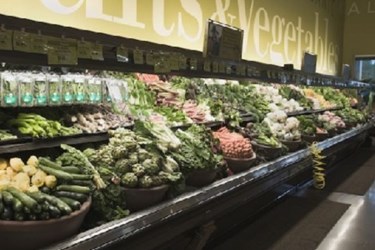3 Steps To Effective Cold Chain Management
By Melissa Lind, contributing writer

Consumer behaviors are showing a growing trend toward fresher products and products made with fresh ingredients. With the increasing demand for perishable products, it is essential for companies to not only invest in, but to effectively manage cold chain operations.
The market size of the fresh prepared foods sector has been estimated at $26 billion annually with a CAGR of up to 7 percent. Consumer studies show there is an increased value perception in refrigerated food, but this has placed additional demand on the cold chain. Because of this, new quick-service-restaurants (QSRs) have been built around fresh food offerings and other QSRs are expanding into fresh food selections.
To meet demand for refrigerated foods and ingredients, food processors and handlers must develop a solid system for cold-chain management. These should draw on standard supply chain management systems, but also have added complexities — refrigeration costs, short timelines, and increased safety concerns, including the likelihood of spoilage — to ensure effectiveness. To effectively manage a cold-chain supply food companies must:
Plan
Proficient planning is essential in the cold chain supply and its managers should be involved in the development of new food products, as well as the process of producing them as early as possible. Cold-chain managers will be able to help identify seasonal availability, costs variances, and safety issues which may affect the product development and marketing process.
Execute
Fresh food products must move from harvest to processing and handling and on to the consumer without suffering damage from all of these environments. In many cases, this must be done in 14 days or less. This means tin order to respond to shortages or changes in supply and demand, visibility within the supply chain is essential. Managers must be able to access data for each point from incoming ingredients, all the way to delivery, all while practicing effective communication. Implementation of a project-management system that can be used across channels may help, but, in some cases, an actual phone call may be warranted.
Analyze
Quality assurance demands that safety be assured while the product is preserved in a fresh and marketable state. Temperature monitoring and other types of real-time alerts help ensure fresh products arrive to market as fresh as possible, but all parties of the cold chain must be able to utilize monitoring data and make changes where appropriate. This may be something as simple as temperature control in a single unit or it may involve changing vendors.
The cold chain brings a heightened concern for both food quality and food safety. Fresh foods can quickly spoil resulting in lost product at a minimum and food-safety events at its worst. Having a retailer turn away your product due to spoilage can impact your brand loyalty and a food-safety event can present massive costs — neither of which help maintain or grow business. Despite the challenges, careful planning and execution of the food cold-chain can help your company compete in an increasingly-demanding environment.
